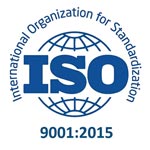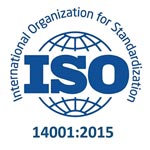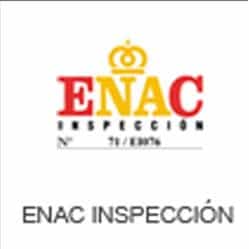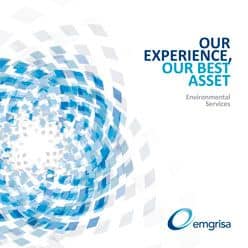Waste or By-products
According to the Spanish Law 22/2011 of the 28th of July, on Waste and Soil Contamination by-products is any substance or object originated from a production process whose primary purpose was not the production of this substance or object.
Conditions for waste to be considered as a by-products
As defined by Article 3-a) a substance can be considered as by-product and not waste where the following conditions are met:
- Ensure that the substance or object is going to be used later.
- That the substance or object can be used directly without having to undergo further transformation different from the usual industrial practice.
- That the substance or object is produced as an integral part of the production process, and
- That further use of the substance or object complies with all relevant product requirements as well as the protection of human and environmental health, without causing adverse general impacts to human health or the environment.
In order to consider a substance or object as by-products these four conditions need to be simultaneously met; that is, only if each of the four conditions are satisfied can by-products be considered; whereas on the contrary, the applicable legal classification will be for waste.
By-products Regulations
Consequently, those substances or objects declared as by-products shall apply the specific rules for products or substances, in particular, Regulation (EC) 1907/2006 of the European Parliament and of the Council of 18th of December 2006 concerning the Registration, Evaluation, Authorisation and Restriction of Chemical (REACH) and Regulation (EC) 1272/2008 of the European Parliament and of the Council of 16th of December 2008 on classification , labelling and packaging of substances and mixtures, amending and repealing Directives 67/548/EEC and 1999/45/EC, and amending Regulation (EC) No 1907/2006.
The Spanish Ministry of Agriculture, Food and the Environment has recently published a procedure that helps to evaluate the consideration of a waste from production to be used as by-products. This document (link in Spanish) incorporates the following scheme of how waste from production processes can be considered as by-products and the applicable legal regime at each stage.

Source: MAGRAMA
By-products Declaration Procedure
The difficulties in declaring a waste as a by-product based on the legal requirements are described as follows:
With respect to the first requisite, “Ensure that the substance or object is going to be used later”, it is necessary to have more information about the existing market and the demand for the material. The possessor who is concerned that a waste is declared a by-product (applicant) should provide the utilization rate of the production waste (estimated annual quantity of production waste expected to be managed as a by-product), in order to assess whether there is a possibility that such waste may remain stored for a prolonged period of time or if, on the other hand, the use is immediate. It should also indicate whether the use of the waste is expected to be sporadic or continued.
With respect to the requisite, “that the substance or object can be used directly without having to undergo further transformation different from the usual industrial practice”, it is essential to clarify what is understood by “further transformation different from the habitual industrial practice”.
Firstly, it is necessary to specify which processes and/or treatments that are considered “transformers”. If transformation is needed then it is likely that the waste has been changed to give it a worth, basically it has been recovered. In this sense, the problem arises that homogenization or stabilization processes are not recovery operations, however, the characteristics of the residue have been changed.
Secondly, it is necessary to understand the habitual industrial practice. If the transformation tasks form an integral part of the production process without a continuity solution, the substance, material or object in question will be able to be considered a by-product. If this is not the case, then it would be considered as a waste subjected to a recovery operation.
Once these points have been clarified, the applicant must provide all of the information in order to evaluate whether the waste is used directly without any further processing or if it requires any type of treatment other than the usual one.
Those interested in the declaration of a waste under the description of a by-product, should facilitate the data relating to the process in which the waste is produced, as well as the rest of products/waste that are released from the productive process.
If in this procedure it is effectively shown that “the substance is generated in a productive process“, this information would be valid to justify this requirement. However, what is meant by the production process should also be also clarified.
The by-product procedure defines the production process as “an activity whose main objective is to obtain a certain product with certain characteristics, as occurs in industrial production and in agricultural and livestock production.”
Often, some of the tasks in providing a worth to a by-product are carried out in the manufacturer’s facilities, but sometimes this process is carried out by the next user, and even other cases this can be carried out by intermediaries. But as long as they are an integral part of the production process, these tasks will not prevent the material from being considered by-product.
At this point arise doubts of the type: “An auxiliary process of purification of gases or effluents, is considered production process?”. The answer can be found in the document “Communication from the Commission to the Council and the European Parliament. Interpretative Communication on waste and by-products “(Brussels, 21.2.2007, COM (2007) 59 final), where gypsum waste from flue gas desulphurisation are considered as non-waste, and therefore, susceptible to being considered as by-products, interpreting accordingly, that the concept of production process, also includes the auxiliary processes of purification that are necessary for the manufacture of the main product that one wants to obtain.
Lastly, with respect to “further use of the substance or object complies with all relevant product requirements as well as the protection of human and environmental health, without causing adverse general impacts to human health or the environment”, the interested parties should present an assessment of the possible health and environmental effects arising from the use of waste originating from production, taking into account all the receptors and means that may be affected (soil, air, water) and comparison with the health and environmental effects that can be produced during the manipulation and use of the raw material to which it intends to replace.
As can be observed, some of the aspects for the implementation of the concept of “by-product” do not seem all that clearly defined, which could hinder its implementation.
In any case, the Working Group of the Committee on Waste Coordination will be responsible for evaluating compliance to the conditions stipulated in Article 4 for utilising a specific use of a waste from production in question. As a result of this analysis, the corresponding Ministerial Order shall be approved, where appropriate, will be open to all companies wishing to manage by-products under the conditions laid down in that Order.
Do not hesitate to contact us if interested on this topic or our services.
Publicado el 14/07/16










